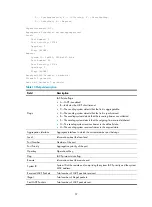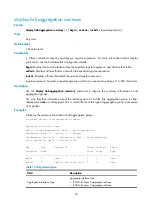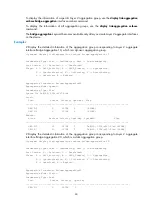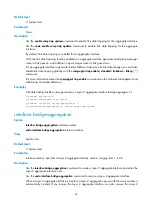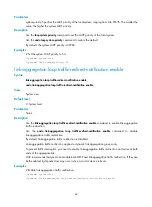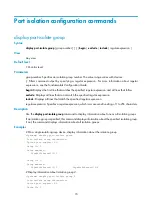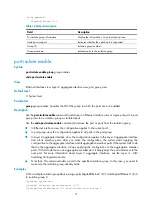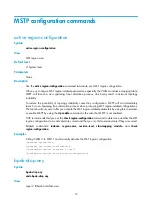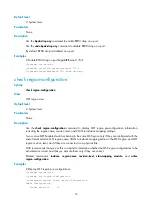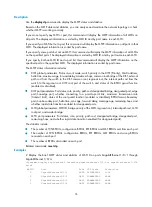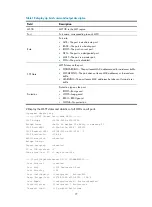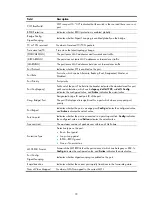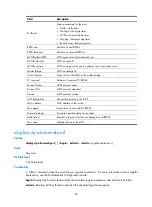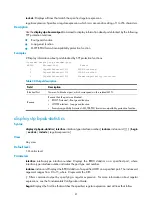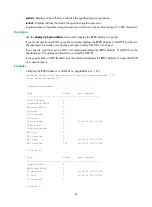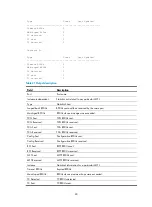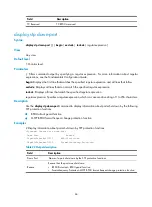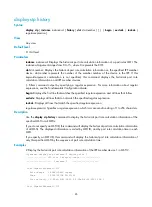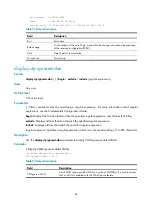
71
Group members:
GigabitEthernet1/0/1
Table 16
Output description
Field Description
Port-isolate group information
Display the information of a port-isolation group
Uplink port support
Indicates whether the uplink port is supported.
Group ID
Isolation group number
Group members
Isolated ports in the isolation group
port-isolate enable
Syntax
port-isolate enable group
group-number
undo port-isolate enable
View
Ethernet interface view, Layer 2 aggregate interface view, port group view
Default level
2: System level
Parameters
group
group-number
: Specifies the ID of the group to which the ports are to be added.
Description
Use the
port-isolate enable
command to add a port in Ethernet interface view or a group of ports in port
group view to an isolation group as isolated ports.
Use the
undo port-isolate enable
command to remove the port or ports from the isolation group.
•
In Ethernet interface view, the configuration applies to the current port.
•
In port group view, the configuration applies to all ports in the port group.
•
In Layer 2 aggregate interface view, the configuration applies to the Layer 2 aggregate interface
and all its member ports. After you make the configuration, the system starts applying the
configuration to the aggregate interface and its aggregation member ports. If the system fails to do
that on the aggregate interface, it stops applying the configuration to the aggregation member
ports. If it fails to do that on an aggregation member port, it simply skips the port and moves to the
next port. For more information about Layer 2 aggregate interfaces, see the
Layer 2
—
LAN
Switching Configuration Guide
.
•
Note that: This command adds a port to the specified isolation group. In this case, you need to
make sure the isolation group already exists.
Examples
# On a multiple-isolation-group device, assign ports GigabitEthernet 1/0/1 and GigabitEthernet 1/0/2
to isolation group 2.
<Sysname> system-view
[Sysname] interface gigabitethernet 1/0/1
[Sysname-GigabitEthernet1/0/1] port-isolate enable group 2

